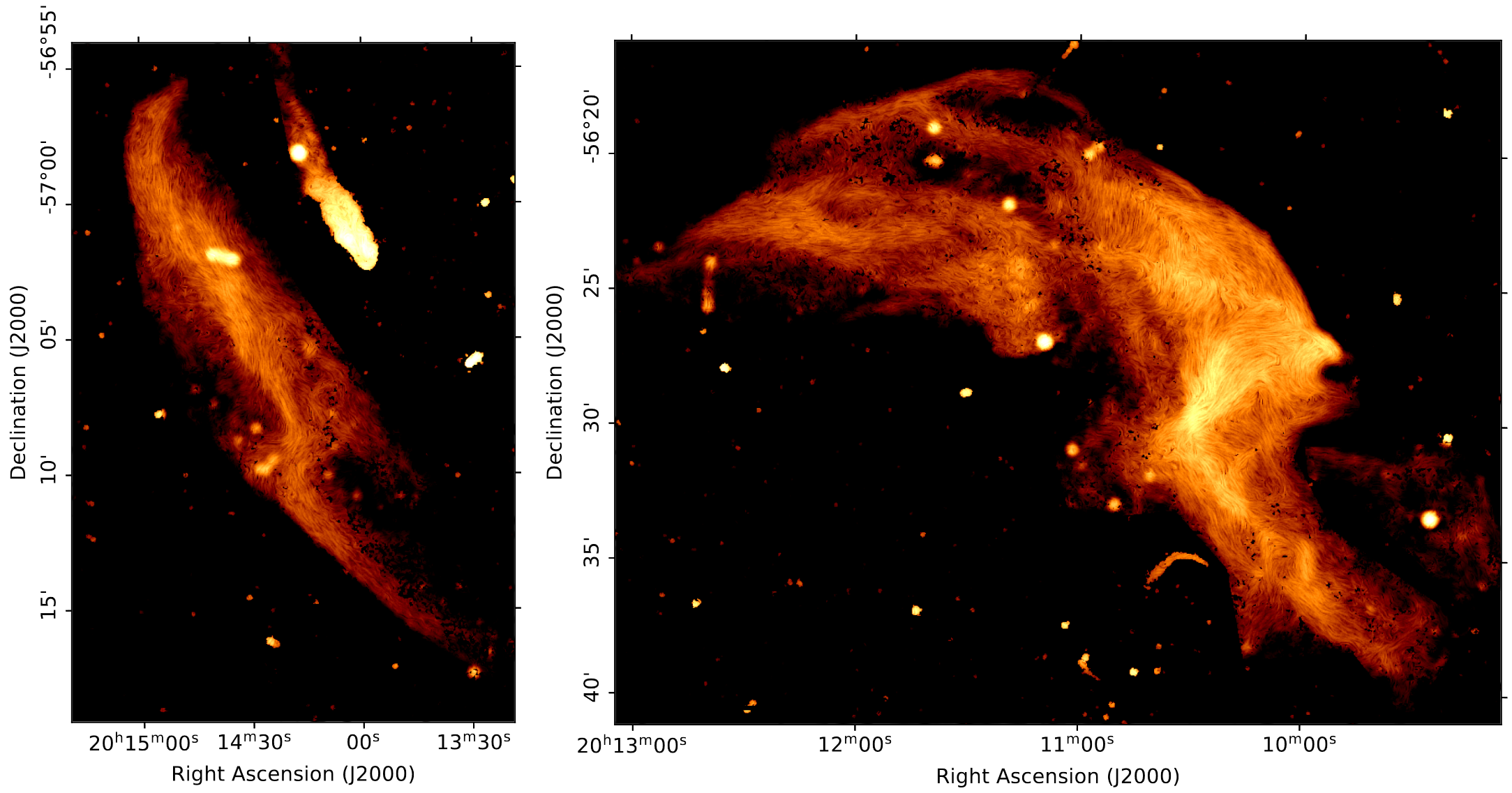Shocks
High resolution simulations of shocks in galaxy clusters
The collision of galaxy clusters are the most energetic events in the universe since the Big Bang. They are observable as spectacular arcs in the radio-sky, the so-called radio relics.

The origin of this radio emission is thought to be relativistic electrons accelerated by the shock, which are loosing their energy in the form of synchrotron emission due to the magnetic field in the intra-cluster medium (ICM).
Further, recent observations show an increasing number of radio relics with complex morphologies. These relics are deformed, patchy and of strongly varying surface brightness.

To study the origin of this observed deformation and patchyness I work with state-of-the art MHD zoom-in simulations of galaxy clusters. These simulations contain an on-the-fly shock finder which allows to show shock surfaces and estimate acceleration of CR electrons, based on recent results from small scale plasma simulations.

While the on-the-fly shock finder allows us to mark tracer particles that experience a shock, we can not easily disentangle colliding or overlapping shock waves from simultanious merger events. To this end I contributed to the development of Virgo, an advanced Machine Learning model which identifies shock surfaces and cathegorizes their associated tracer particles. We presented the package and its application to the COMPASS simulation set in Lamparth et. al. (2022).